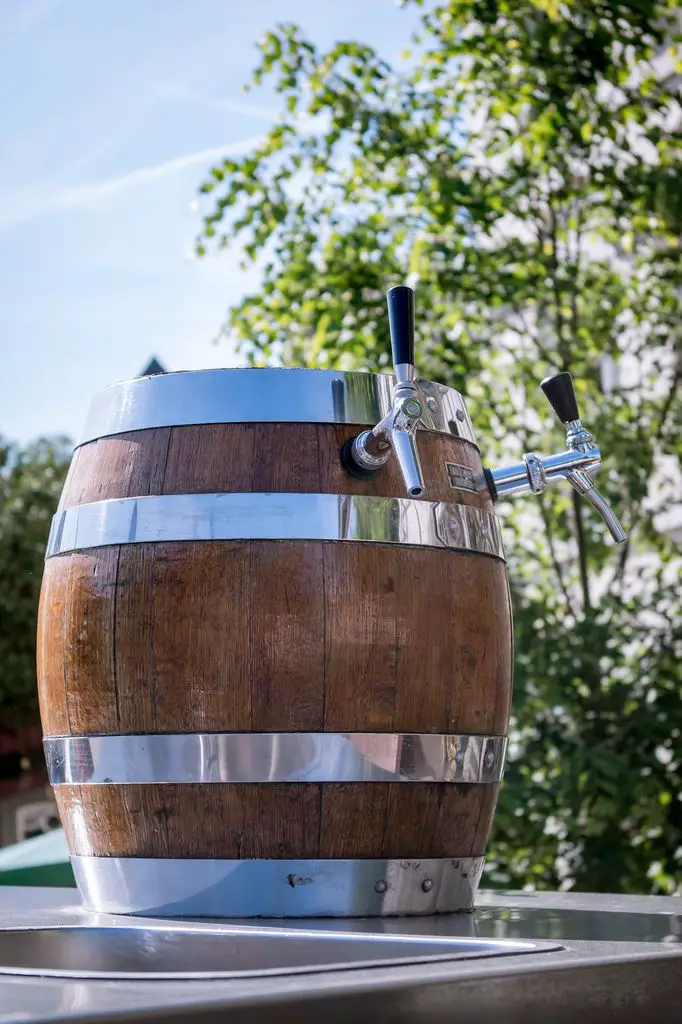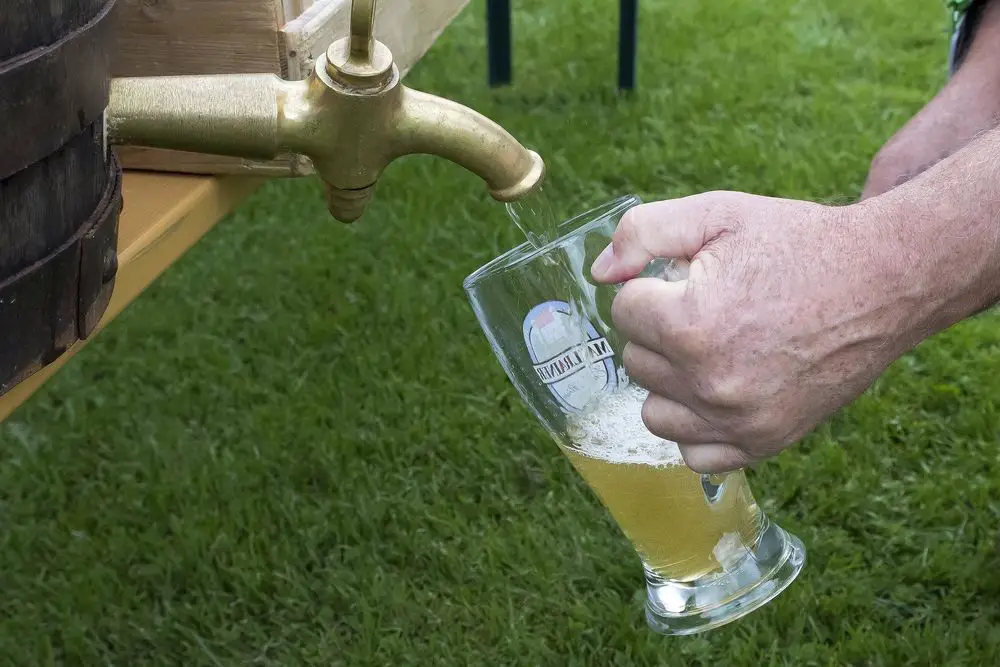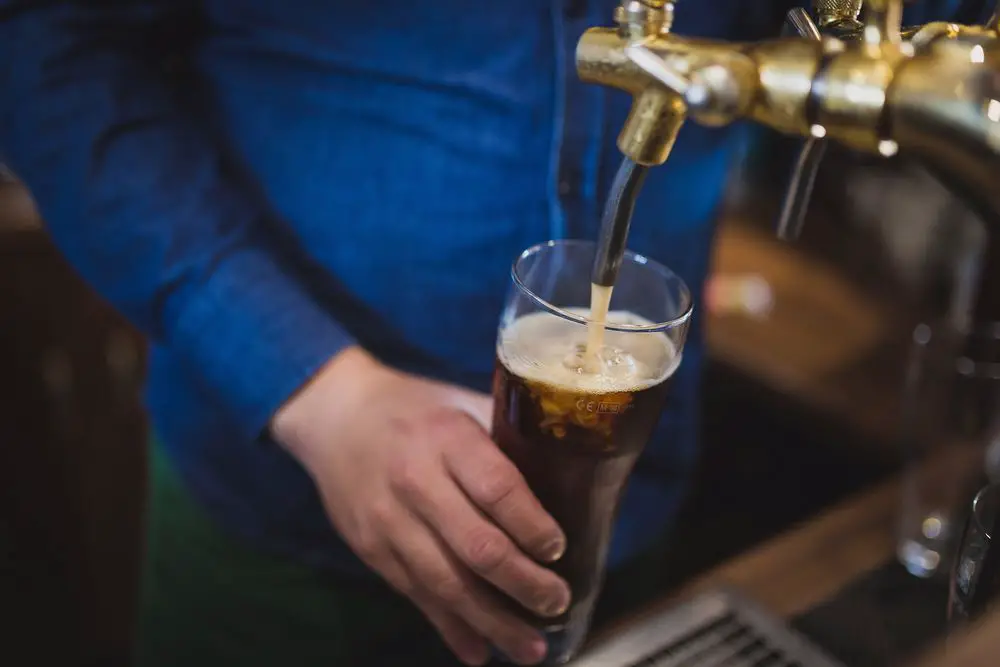If you buy something through a link in our posts, we may get a small share of the sale.
Every brewer’s dream is to have a perfect pint of beer free from foam. However, sometimes it seems like no matter what you do, your keg won’t stop foaming. If this is the case, you must learn how to stop a keg from foaming to have perfect pints.
Contents
How to Stop a Keg From Foaming
The best way to stop a keg from foaming is to use a beer line chiller. A beer line chiller is a device that attaches to your beer tap and runs cold water through the lines. This will keep your beer cold from the keg to the tap and will help reduce foam. Most of the time, foam is caused by warm beer. So, keeping your beer lines cold will keep your beer from foaming and ensure perfect prints every time.

Another way to stop a keg from foaming is to place it on its side and roll it slowly in a clockwise and anticlockwise motion. Each distance should be three feet or less. Doing this will help redistribute the CO2 in the keg. Afterwards, store the keg upright in a fridge and wait for 24 hours before serving. This will help get rid of the foam and give you perfect pints.
A less common way to stop a keg from foaming is to add a defoamer. A defoamer is a substance that reduces the surface tension of liquids, preventing foam from forming. In beer, the defoamer will sit on top of the beer and create a barrier between the beer and the air, preventing foam from forming. The only downside to using a defoamer is that it can affect your beer taste.
Other Ways to Prevent Foam
The main goal is to keep your beer cold and to prevent it from getting warm. Warmer temperatures will cause more foam. Try these tips to keep your beer at the perfect temperature and prevent foam.
Check the keg Pressure
Checking your keg’s pressure is one of the most important things you can do to prevent foam. Too much pressure will cause your beer to foam, while too little pressure will not allow the carbonation to stay in the beer, causing it to go flat. The perfect pressure for a keg is between 12-14 PSI.
Ensure you have an accurate pressure gauge. You can check the pressure by opening the keg and releasing some of the pressure. If the pressure is too high, you can open the pressure relief valve to release some of the pressure. You can add more CO2 to the keg if the pressure is too low.
Check the Keg Temperature
The temperature of the keg can also affect foam. You need to ensure the keg is between 36-40 degrees Fahrenheit. Anything beyond these temperatures will result in foam. If the temperature is above the ideal range, place the keg in a cooler for some time to let it chill. If the temperature is below the ideal range, warm up the keg using a wet rag and hot water.

Always have your thermometer to check the keg’s temperature when you are serving. You don’t want to serve over-chilled or over-warmed beer. Also, don’t forget that the temperature of your keg will rise as you tap it. So, check the thermometer from time to time while serving it.
Clean the Keg
You need to ensure the keg is clean before you start using it. Any dirt, dust, or residue can affect the taste of your beer and result in foam. So, clean the keg using a mild detergent and hot water. You can also use a non-rinse cleaner for this purpose. After cleaning the keg, rinse it thoroughly using hot water. Then, sanitize it using a sanitizing solution.
Once you are done sanitizing the keg, let it air dry. Don’t use a towel to dry it as it can introduce contaminants. You need to clean your keg every time you use it. This way, you can avoid contamination and keep your beer’s taste intact.
Fill the Keg With CO2
Carbon dioxide (CO2) is used to dispense beer from a keg. It also prevents foam by keeping the beer under pressure. So, you need to make sure the keg has enough CO2. You can use a CO2 tank and regulator to do this. Set the pressure to 12-14 psi. This way, you can ensure the beer is properly carbonated and doesn’t foam.
Don’t overfill the keg with CO2, as it can make the beer taste flat. Also, don’t use too much pressure as it can make the beer foam. Have an extra CO2 tank on hand, so you can adjust the pressure if needed.
Install a Foam Preventer
A foam preventer is a small device you can install on the keg’s tap. It’s also called a beer gun. It allows you to dispense beer without foam. This way, you can avoid foam altogether. To use a foam preventer, place it on the keg’s tap and open the valve. Then, hold down the trigger and fill your glass with beer. The foam preventer will stop the beer flow when you release the trigger.
A foam preventer is a great way to avoid foam. However, it is prone to leaking. So, you need to check it from time to time to ensure it’s working correctly. Unfortunately, at times it also gets destroyed by overuse. So, you need to be careful while using it, or you’ll end up with a mess.

Benefits of Enjoying Beer Without Foam
Foam can be a real pain, especially if you are trying to pour a perfect pint of beer. No beer lover wants to have a perfect pint of beer with foam in it. Here are some benefits of avoiding foam:
- You can enjoy the full flavor of your beer: A foamless beer is more flavorful as all the aromas are concentrated in the liquid.
- You can avoid wasting beer: When you pour a beer with foam, most of it is wasted as it’s left in the glass. By avoiding foam, you can ensure all the beer goes into your glass.
- You need less CO2 to carbonate your beer: When you have less foam, you need less CO2 to carbonate your beer. This way, you can save money on CO2.
- You can pour beer faster: A foamless beer can be poured faster as there is no need to wait for the foam to settle. You just need to open the tap and pour.
- You can avoid spillage: When you pour a beer with foam, there is a risk of spillage. This is because the foam can overflow from the glass. By avoiding foam, you can avoid spills and wasted beer.
Frequently Asked Questions
Why Is My Keg Beer Flat and Foamy?
The keg beer may be flat and foamy due to over-carbonation. When there is too much CO2 in the beer, it can make it taste flat and foamy. You can adjust the CO2 pressure to fix this problem. This way, you can ensure the beer is properly carbonated and doesn’t foam.
What Pressure Should I Keep My Keg At?
Most ales and lagers are carbonated at 12-14 psi. This way, you can ensure the beer is properly carbonated and doesn’t foam. Others, such as stouts and porters, are carbonated at lower pressures. So, you need to adjust the pressure according to the type of beer you are serving.
How Long Should Keg Sit Before Tapping It?
The keg should sit at least 24 hours before tapping it. This way, you can ensure the beer is properly carbonated. If you tap it too early, the beer may not be carbonated enough and will foam.
Conclusion
Enjoying a beer without foam is possible if you follow the right steps. Ensure the keg has enough CO2, and don’t overfill it. You can also install a foam preventer to dispense beer through a faucet without foam. Also, check the pressure periodically to ensure the beer is properly carbonated. Cheers!

